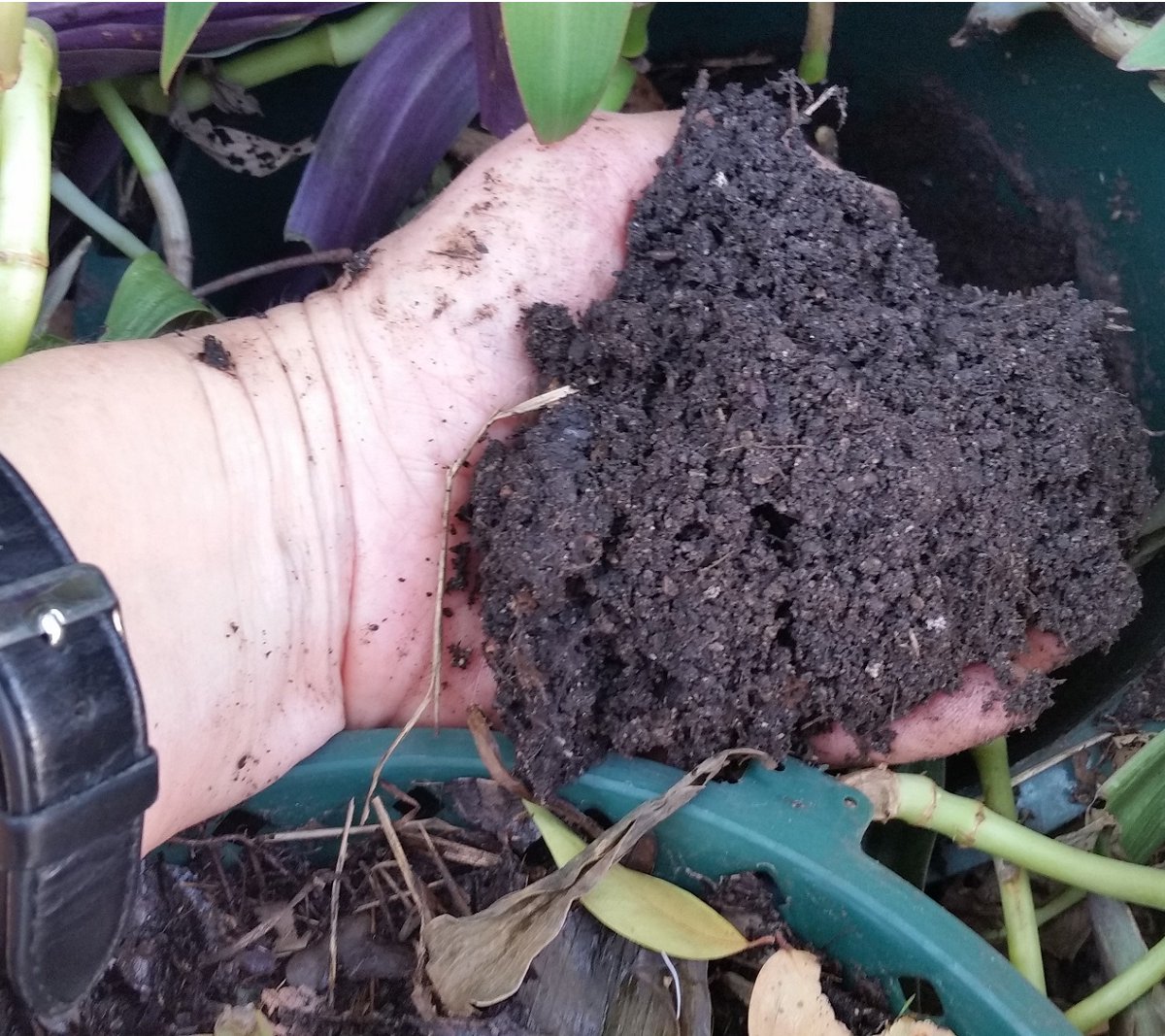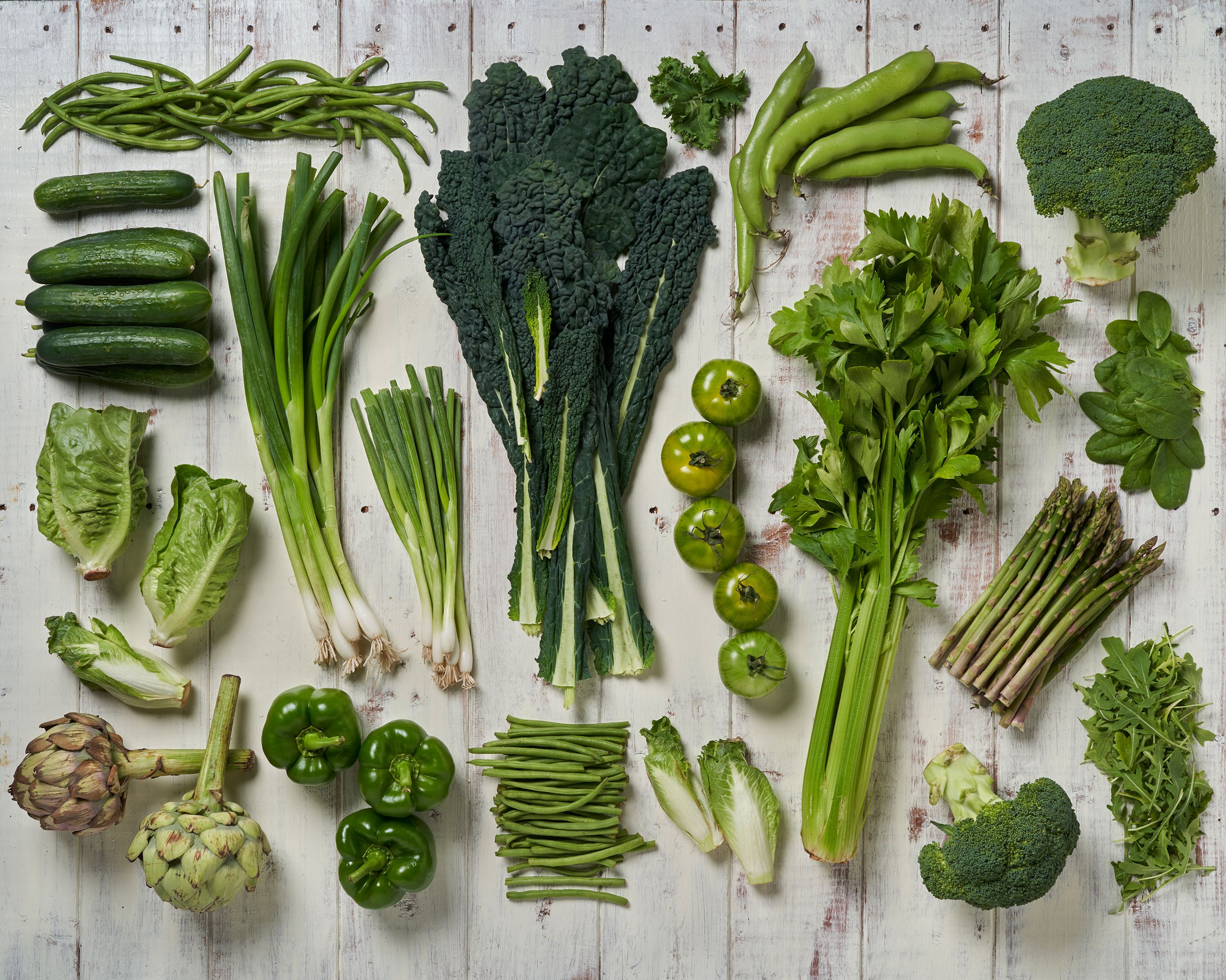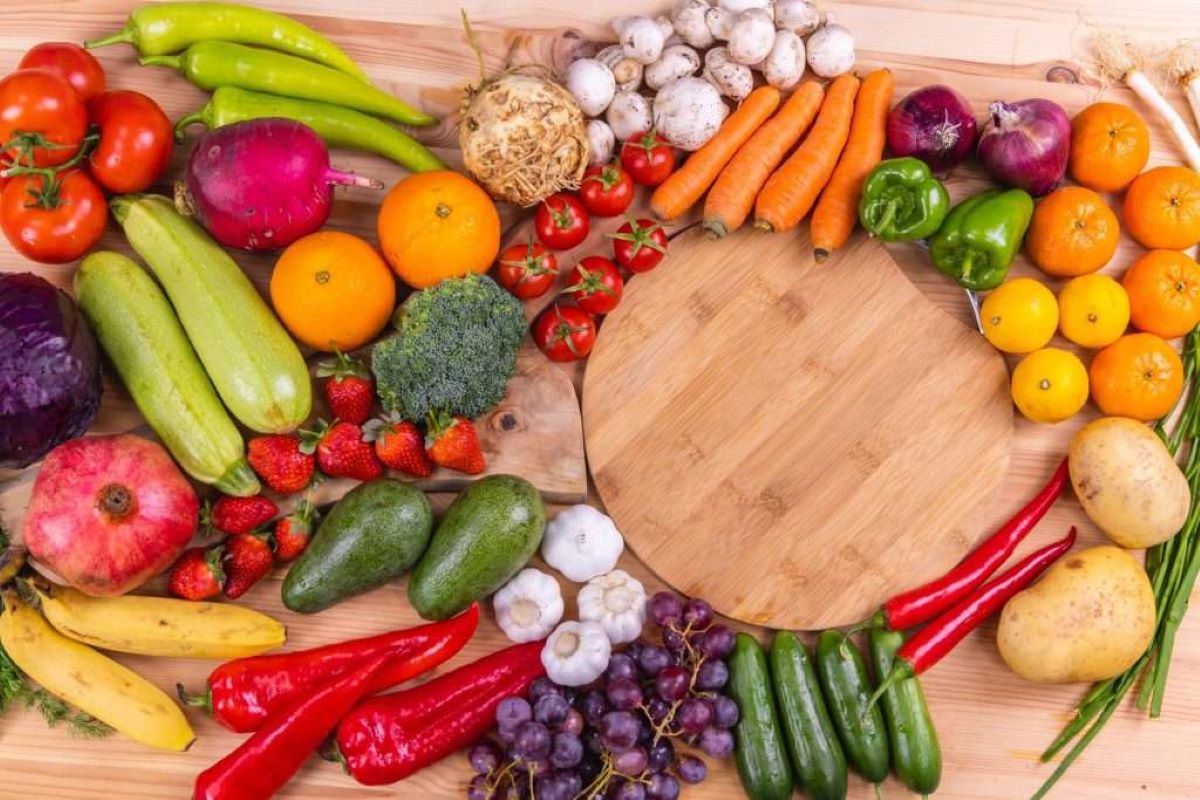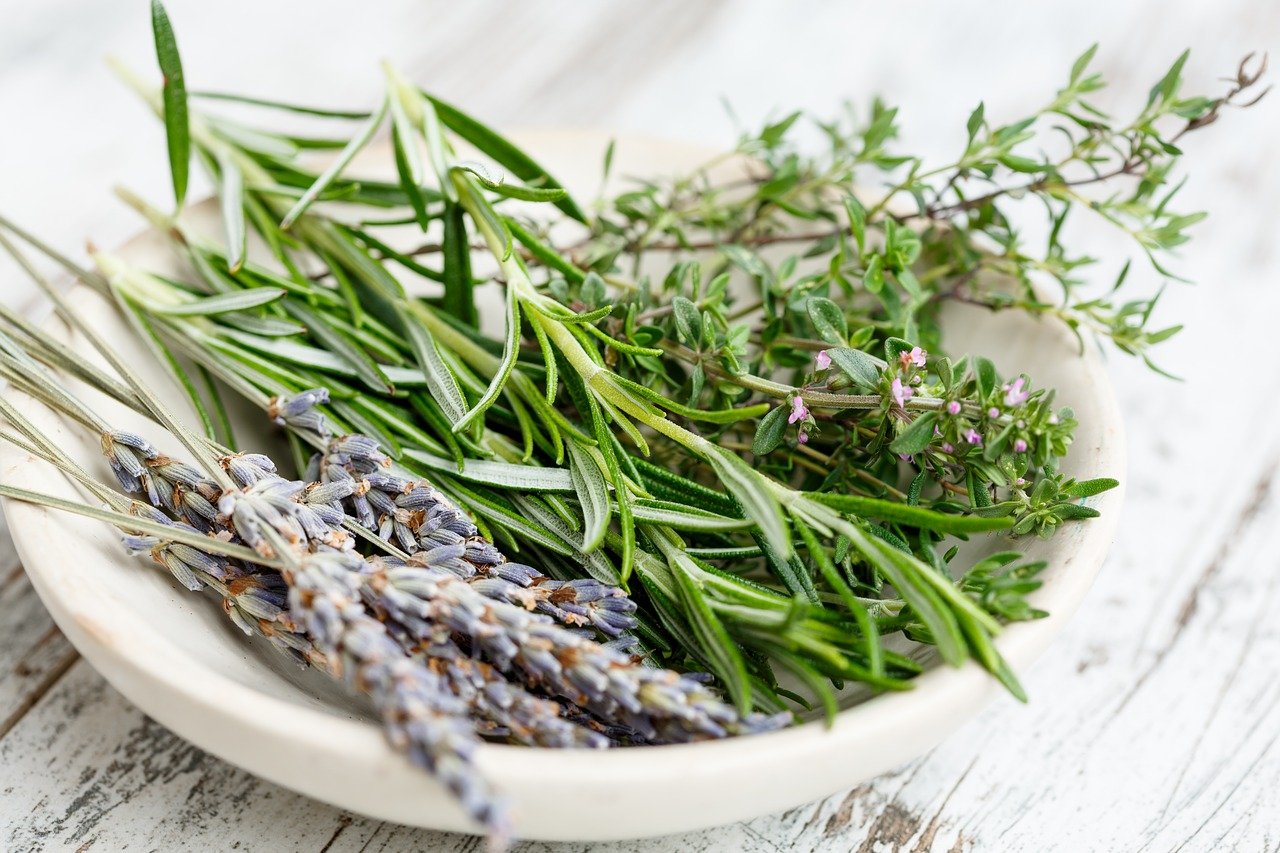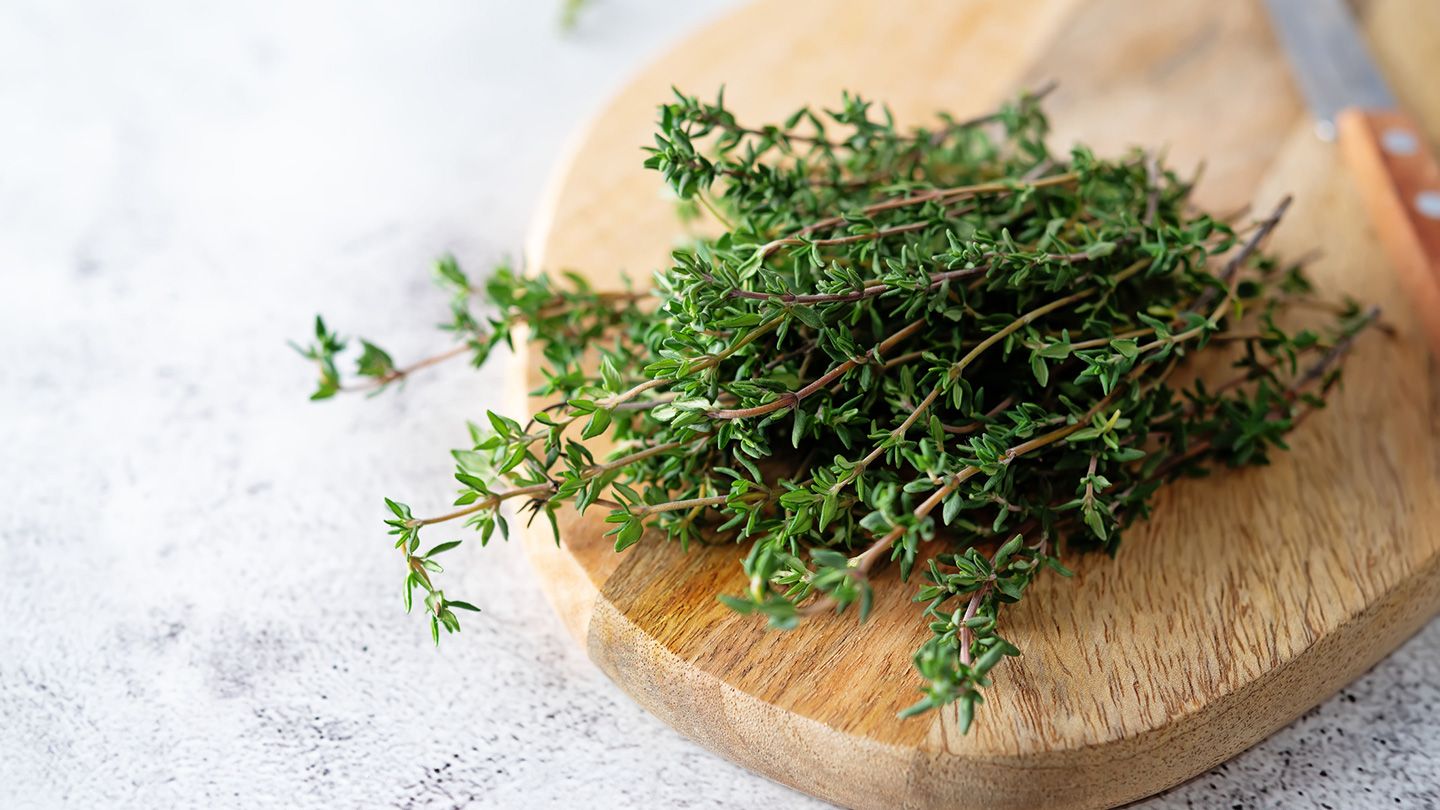Home>Gardening News and Trends>What Is 13-13-13 Fertilizer Good For
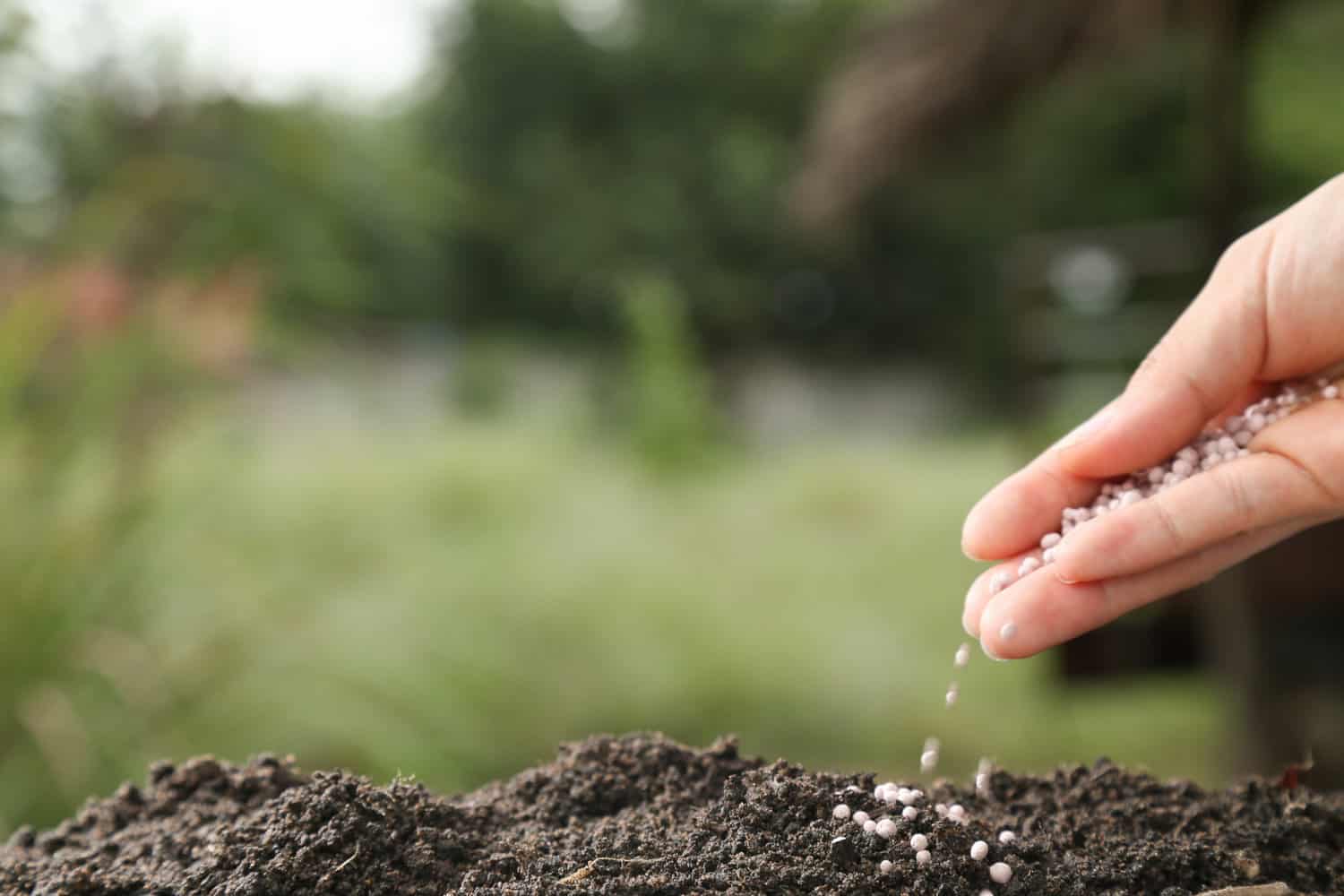

Gardening News and Trends
What Is 13-13-13 Fertilizer Good For
Modified: January 22, 2024
Discover the benefits of 13-13-13 fertilizer and how it can transform your garden. Read the latest news on using this versatile fertilizer for optimal plant growth.
(Many of the links in this article redirect to a specific reviewed product. Your purchase of these products through affiliate links helps to generate commission for Chicagolandgardening.com, at no extra cost. Learn more)
Table of Contents
- Introduction
- What is 13-13-13 Fertilizer?
- Benefits of Using 13-13-13 Fertilizer
- Increased Nutrient Availability
- Balanced Nutrient Ratio
- Promotes Healthy Plant Growth
- Suitable for Various Plants
- Enhances Root Development
- Long-Lasting Effects
- How to Use 13-13-13 Fertilizer
- Dosage Recommendations
- Precautions and Considerations
- Conclusion
Introduction
Fertilizers play a crucial role in maintaining the health and vitality of plants. They provide essential nutrients that may not be present in sufficient quantities in the soil. Among the various types of fertilizers available, 13-13-13 fertilizer is one that has gained popularity among gardeners and farmers alike. Providing a balanced ratio of essential macronutrients, 13-13-13 fertilizer offers numerous benefits for plant growth and development.
So, what exactly is 13-13-13 fertilizer? It is a granular fertilizer that contains equal parts of three primary macronutrients: nitrogen (N), phosphorus (P), and potassium (K). The numbers on the fertilizer packaging indicate the percentage of each macronutrient, so in the case of 13-13-13 fertilizer, it contains 13% nitrogen, 13% phosphorus, and 13% potassium. This balanced ratio makes it a versatile option for a wide range of plants.
One of the key advantages of 13-13-13 fertilizer is its ability to enhance nutrient availability in the soil. The balanced ratio of nitrogen, phosphorus, and potassium ensures that plants receive adequate amounts of all three essential macronutrients. This promotes healthy growth, strong root development, and robust plant structures.
Moreover, 13-13-13 fertilizer works well with various plants, including flowers, vegetables, fruits, and even ornamental plants. It provides the essential nutrients necessary for optimal growth and productivity, making it suitable for both large-scale cultivation and home gardening.
Another benefit of using 13-13-13 fertilizer is its long-lasting effects. The slow-release formula allows for a steady supply of nutrients over an extended period. This reduces the frequency of fertilizer application, saving time and effort for gardeners. Additionally, the slow-release function prevents nutrient leaching, ensuring that plants receive a consistent supply of nutrients without any wastage.
In the following sections, we will explore the benefits of using 13-13-13 fertilizer in more detail. We will discuss its increased nutrient availability, balanced nutrient ratio, promotion of healthy plant growth, suitability for various plants, enhancement of root development, and long-lasting effects. We will also provide dosage recommendations and important precautions to consider when using 13-13-13 fertilizer. So, let’s dive into the world of 13-13-13 fertilizer and discover how it can elevate your garden to new heights.
What is 13-13-13 Fertilizer?
13-13-13 fertilizer is a type of granular fertilizer that contains equal parts of three primary macronutrients: nitrogen (N), phosphorus (P), and potassium (K). The numbers on the fertilizer packaging indicate the percentage of each nutrient, so in the case of 13-13-13 fertilizer, it contains 13% nitrogen, 13% phosphorus, and 13% potassium. This balanced ratio makes it a popular choice among gardeners and farmers.
Nitrogen is an essential nutrient that is vital for promoting lush green foliage and healthy plant growth. It plays a significant role in the formation of proteins, enzymes, and chlorophyll, which are crucial for photosynthesis and overall plant development. Phosphorus, on the other hand, is responsible for promoting root development, flower formation, and fruit production. It aids in energy transfer within the plant, facilitating key metabolic processes. Lastly, potassium is essential for overall plant health, contributing to disease resistance, water regulation, and nutrient uptake.
The balanced nutrient ratio of 13-13-13 fertilizer ensures that plants receive adequate amounts of nitrogen, phosphorus, and potassium, without any nutrient imbalances. This makes it suitable for a wide range of plants, including vegetables, fruits, flowers, and shrubs. Whether you are growing vibrant roses, juicy tomatoes, or sweet strawberries, 13-13-13 fertilizer provides the necessary nutrients for optimal growth and productivity.
Furthermore, 13-13-13 fertilizer is typically formulated using slow-release technology. This means that the nutrients are released gradually over time, providing a continuous supply to plants. Unlike fast-release fertilizers that can cause nutrient leaching and lead to inefficient absorption by plants, the slow-release nature of 13-13-13 fertilizer ensures a steady and sustainable nutrient uptake.
As with any fertilizer, it is important to follow the recommended dosage guidelines when using 13-13-13 fertilizer. Applying too much fertilizer can lead to nutrient burn and damage the plants, while applying too little may result in insufficient nutrient uptake. It is best to refer to the manufacturer’s instructions or consult with a gardening expert to determine the appropriate dosage for your specific plants and soil conditions.
In the following sections, we will explore the various benefits of using 13-13-13 fertilizer. From increased nutrient availability to promoting healthy plant growth, we will delve deeper into the advantages this fertilizer offers. So, let’s continue our journey and uncover the wonders of 13-13-13 fertilizer.
Benefits of Using 13-13-13 Fertilizer
Using 13-13-13 fertilizer offers several advantages for plant growth and development. Let’s explore the various benefits this fertilizer provides:
Increased Nutrient Availability: 13-13-13 fertilizer provides a balanced ratio of nitrogen, phosphorus, and potassium. This balanced nutrient composition ensures that plants receive adequate amounts of all three essential macronutrients, promoting optimum growth and development. The availability of these key nutrients in proper proportions leads to healthier plants with improved strength and resilience.
Balanced Nutrient Ratio: The equal parts of nitrogen, phosphorus, and potassium in 13-13-13 fertilizer create a balanced nutrient ratio. This balanced formula is beneficial because an imbalance in nutrients can lead to nutrient deficiencies or excesses, which can negatively affect plant health and productivity. With 13-13-13 fertilizer, you can provide a well-rounded nutrient profile to your plants.
Promotes Healthy Plant Growth: The nutrient composition of 13-13-13 fertilizer supports various aspects of plant growth. Nitrogen promotes lush green foliage and stimulates overall plant growth, while phosphorus aids in root development, flower formation, and fruit production. Potassium contributes to disease resistance, helps regulate water within the plant, and supports nutrient uptake. With the balanced nutrients provided by 13-13-13 fertilizer, plants can thrive and reach their full potential.
Suitable for Various Plants: One of the remarkable features of 13-13-13 fertilizer is its versatility. It is suitable for a wide range of plants, including flowers, vegetables, fruits, shrubs, and even ornamental plants. Whether you have a vibrant flower garden or a productive vegetable patch, 13-13-13 fertilizer can fulfill the nutritional needs of different plant species, making it a convenient choice for overall garden maintenance.
Enhances Root Development: The phosphorus content in 13-13-13 fertilizer plays a vital role in root development. It stimulates root growth, making plants better equipped to absorb water and nutrients from the soil. Stronger root systems result in healthier and more resilient plants that are better able to withstand environmental stressors and other challenges.
Long-Lasting Effects: 13-13-13 fertilizer is often formulated using slow-release technology. This means that the nutrients are gradually released over time, providing a steady supply to plants. The slow-release formula ensures that the nutrients are available to the plants over an extended period, reducing the frequency of fertilizer application. Additionally, slow-release fertilizers minimize the risk of nutrient leaching, ensuring that plants can efficiently utilize the nutrients without wastage.
In the following sections, we will explore each of these benefits in more detail, providing insights into how 13-13-13 fertilizer can revolutionize your gardening experience. So, let’s continue to unravel the wonders it holds and analyze its impact on various aspects of plant growth and vitality.
Increased Nutrient Availability
One of the key benefits of using 13-13-13 fertilizer is its ability to increase nutrient availability in the soil. The balanced ratio of nitrogen, phosphorus, and potassium ensures that plants have access to all three essential macronutrients necessary for their growth and development.
Nitrogen (N) is essential for plant growth as it plays a crucial role in the formation of proteins, enzymes, and chlorophyll. These components are vital for photosynthesis, the process by which plants convert sunlight into energy. By providing a significant amount of nitrogen, 13-13-13 fertilizer enables plants to produce the necessary compounds for thriving foliage and lush green leaves.
Phosphorus (P), another essential nutrient, is responsible for promoting root development, flower formation, and fruit production. It aids in energy transfer within the plant, facilitating key metabolic processes. By incorporating phosphorus into their nutrient intake, plants can establish strong root systems, leading to improved nutrient absorption and enhanced overall growth.
Potassium (K) is crucial for various physiological functions in plants. It regulates water balance within cells, improves disease resistance, and enhances nutrient uptake. Adequate potassium levels promote efficient plant metabolism and contribute to the overall health and vigor of plants. By providing a balanced amount of potassium, 13-13-13 fertilizer ensures that plants have the necessary resources to maintain their well-being.
With 13-13-13 fertilizer, the balanced ratio of nitrogen, phosphorus, and potassium ensures that plants receive a consistent supply of all three macronutrients. This reduces the risk of nutrient deficiencies, which can result in stunted growth, discoloration, and reduced plant resiliency.
The increased nutrient availability provided by 13-13-13 fertilizer is especially beneficial in areas with nutrient-depleted or poor-quality soils. In these cases, plants may struggle to obtain sufficient nutrients from the soil alone. By applying 13-13-13 fertilizer, gardeners and farmers can supplement the soil with essential nutrients, ensuring that plants have access to the nutrients they need for healthy growth.
Furthermore, the availability of a balanced nutrient profile allows plants to allocate resources efficiently. This enables them to focus on various growth processes, including vegetative growth, root development, flower formation, and fruit production. By providing a consistent supply of essential macronutrients, 13-13-13 fertilizer supports optimal plant growth and development throughout the growing season.
Ultimately, by using 13-13-13 fertilizer, gardeners and farmers can ensure that their plants have access to the necessary nutrients for robust growth and vitality. Whether you are tending to a garden or cultivating crops on a larger scale, 13-13-13 fertilizer can enhance nutrient availability in the soil, promoting healthy plant development and increasing overall productivity.
Balanced Nutrient Ratio
One of the significant advantages of using 13-13-13 fertilizer is its balanced nutrient ratio. 13-13-13 fertilizer contains equal parts of nitrogen (N), phosphorus (P), and potassium (K), providing a well-rounded nutrient profile for plants.
The balanced nutrient ratio ensures that plants receive all three essential macronutrients in proper proportions. Nitrogen is responsible for promoting lush green foliage and stimulating overall plant growth. It plays a vital role in the formation of proteins, enzymes, and chlorophyll, which are crucial for photosynthesis and other metabolic processes. With an equal amount of nitrogen in 13-13-13 fertilizer, plants can achieve healthy and vibrant green leaves.
Phosphorus is essential for root development, flower formation, and fruit production. It is involved in several key processes, including energy transfer, DNA synthesis, and cellular division. Adequate phosphorus levels encourage robust root growth, enabling plants to establish a strong foundation for nutrient uptake and water absorption. By having an equal amount of phosphorus in 13-13-13 fertilizer, plants can develop well-balanced root systems and enhance their ability to extract nutrients from the soil.
Potassium contributes to various physiological functions in plants, including osmoregulation, enzyme activation, and disease resistance. It helps regulate water balance within cells, promotes sturdy stems, and enhances nutrient uptake. Additionally, potassium contributes to overall plant health and enhances resistance to biotic and abiotic stressors. With an equal amount of potassium in 13-13-13 fertilizer, plants can maintain optimal cellular functions and effectively respond to environmental challenges.
The balanced nutrient ratio provided by 13-13-13 fertilizer prevents nutrient imbalances that can negatively impact plant health. When plants receive an excess of one nutrient without a proportional amount of others, it can lead to nutrient deficiencies or toxicities. For example, too much nitrogen can result in lush foliage but limited flower or fruit production. Similarly, an inadequate supply of phosphorus can hinder root development and flowering. By offering a consistent ratio of nutrients, 13-13-13 fertilizer supports overall plant vitality and prevents nutrient-related issues.
The balanced nutrient ratio of 13-13-13 fertilizer is suitable for a wide range of plants, including flowers, vegetables, fruits, and shrubs. It provides a well-rounded nutritional foundation that meets the requirements of various plant species and growth stages. Additionally, the balanced nutrient composition allows plants to allocate resources effectively, supporting different aspects of growth and development.
In summary, the balanced nutrient ratio of 13-13-13 fertilizer ensures that plants receive optimal amounts of nitrogen, phosphorus, and potassium. This balanced formula promotes healthy growth, enhances root development, and increases overall plant resilience. By incorporating 13-13-13 fertilizer into your gardening regimen, you can provide your plants with the necessary nutrients for thriving and flourishing throughout their lifecycle.
Promotes Healthy Plant Growth
One of the primary benefits of using 13-13-13 fertilizer is its ability to promote healthy plant growth. The balanced nutrient composition of this fertilizer provides the necessary elements to support various aspects of plant development, resulting in robust and vibrant plants.
Nitrogen (N) is a key component in 13-13-13 fertilizer that promotes vigorous plant growth. It is an essential nutrient for the synthesis of proteins, enzymes, and chlorophyll, which are crucial for photosynthesis and overall plant metabolism. Adequate nitrogen levels stimulate the production of new cells, leading to increased leaf expansion, sturdy stems, and overall plant size. By incorporating 13-13-13 fertilizer into your gardening routine, you can provide plants with a consistent supply of nitrogen to fuel their growth.
Phosphorus (P), another important nutrient in 13-13-13 fertilizer, plays a critical role in promoting healthy plant growth. It is involved in energy transfer, DNA synthesis, and cell division. Phosphorus stimulates root development, allowing plants to establish a strong root system capable of absorbing water and nutrients from the soil. With an adequate supply of phosphorus from 13-13-13 fertilizer, plants can grow stronger, healthier, and more resilient to environmental stress.
Potassium (K) is a vital nutrient for promoting overall plant health and development. It aids in water regulation within plant cells, improves disease resistance, and supports nutrient uptake. Potassium deficiency can result in weakened plant structures, diminished vigor, and increased susceptibility to diseases and pests. By providing a balanced amount of potassium through 13-13-13 fertilizer, you can ensure that plants have the resources they need to maintain optimal health.
The balanced nutrient composition of 13-13-13 fertilizer not only promotes vegetative growth but also facilitates other essential plant processes. Floral development and fruit production are crucial stages in the life cycle of many plants. Phosphorus in 13-13-13 fertilizer plays a significant role in these processes, ensuring robust flower formation and the development of quality fruits. Adequate nutrient availability from 13-13-13 fertilizer enables plants to allocate resources effectively, supporting these crucial reproductive stages.
In addition to promoting above-ground growth, 13-13-13 fertilizer also contributes to root development. The phosphorus content in this fertilizer encourages root growth and branching, leading to a larger root surface area. Robust root systems improve nutrient and water absorption, enhance plant stability, and increase the overall performance of plants. By incorporating 13-13-13 fertilizer into your gardening practices, you can foster healthy roots and ensure the long-term vitality of your plants.
Furthermore, 13-13-13 fertilizer provides the necessary nutrients for optimal plant vitality throughout the growing season. The slow-release formula allows for a continuous supply of nutrients, ensuring that plants receive a consistent source of essential nutrition. With the steady availability of balanced nutrients from 13-13-13 fertilizer, plants can maintain healthy growth, resist environmental stress, and reach their full potential.
By promoting healthy plant growth, 13-13-13 fertilizer enhances the overall beauty and productivity of your garden. Whether you are growing flowers, vegetables, or fruit-bearing plants, incorporating 13-13-13 fertilizer can provide the necessary nutrients to support vibrant and thriving plants.
Suitable for Various Plants
One of the significant advantages of using 13-13-13 fertilizer is its versatility and suitability for a wide range of plants. Whether you have a flower garden, a vegetable patch, or a collection of ornamental plants, 13-13-13 fertilizer can meet the nutritional needs of different plant species and varieties.
Flowers benefit greatly from the balanced nutrient ratio provided by 13-13-13 fertilizer. Whether you are growing roses, lilies, or any other flowering plant, 13-13-13 fertilizer can promote robust growth, vibrant blooms, and extended flowering periods. The balanced composition ensures that flowers have access to the nitrogen, phosphorus, and potassium necessary for healthy foliage, strong stems, and beautiful blossoms.
Vegetable plants also thrive when given the proper nutrients, and 13-13-13 fertilizer can provide the essential macronutrients vital for their growth and productivity. From tomatoes and cucumbers to peppers and lettuce, 13-13-13 fertilizer supports healthy root development, robust vegetative growth, and optimal fruit or vegetable production. The balanced nutrient ratio ensures that vegetable plants receive the right amount of nutrients at each growth stage, contributing to overall plant vigor and quality produce.
Fruit-bearing plants, whether small fruit trees or berry bushes, also benefit from the use of 13-13-13 fertilizer. The nutrients supplied by this fertilizer promote healthy flowering, proper fruit set, and enhanced fruit development. By using 13-13-13 fertilizer, you can provide the necessary nutrients for your fruit-bearing plants, leading to increased yields, improved fruit quality, and better resistance to pests and diseases.
Ornamental plants, including shrubs and trees, can also thrive with the help of 13-13-13 fertilizer. These plants contribute to the overall aesthetic appeal of landscapes, and a balanced nutrient supply is essential for their health and vitality. 13-13-13 fertilizer provides the necessary nutrients to support strong root systems, lush foliage, and vigorous growth in ornamental plants. Whether you have flowering shrubs, evergreen trees, or decorative bushes, this fertilizer can help maintain their beauty and overall well-being.
Aside from the specific examples mentioned, various other plants can benefit from the balanced nutrient ratio provided by 13-13-13 fertilizer. It can be used for potted plants, indoor plants, and even lawn grass. The versatility of this fertilizer makes it a convenient and reliable choice for all your gardening needs.
When using 13-13-13 fertilizer, it is important to consider the specific nutrient requirements of each plant species. Some plants may require higher or lower amounts of certain nutrients, so it is best to refer to fertilization guidelines or consult gardening experts for more specific recommendations. By tailoring the application of 13-13-13 fertilizer to the needs of each plant, you can maximize the benefits and ensure optimal growth and performance.
Overall, the versatility and adaptability of 13-13-13 fertilizer make it a valuable tool in the toolbox of any gardener or farmer. Whether you have a diverse garden or a specific plant collection, incorporating 13-13-13 fertilizer can provide the balanced nutrients necessary for healthy and thriving plants.
Enhances Root Development
One of the significant benefits of using 13-13-13 fertilizer is its ability to enhance root development in plants. Strong and healthy root systems are crucial for nutrient and water uptake, overall plant stability, and resilience against environmental stressors. The balanced nutrient composition of 13-13-13 fertilizer supports root growth, resulting in robust and well-established root systems.
Phosphorus (P), a key component of 13-13-13 fertilizer, plays a pivotal role in promoting root development. It stimulates root growth and branching, leading to an increased surface area for nutrient and water absorption. This allows plants to effectively capture and utilize essential resources from the soil. With sufficient phosphorus from 13-13-13 fertilizer, plants can establish stronger and more extensive root networks, resulting in improved nutrient uptake and enhanced overall growth.
Healthy root development is essential for all types of plants, including flowers, vegetables, fruits, and ornamental plants. In flowering plants, robust root systems support the efficient transfer of water and nutrients to the blossoms, resulting in vibrant and long-lasting blooms. For vegetable plants, strong roots ensure the uptake of essential nutrients necessary for optimal growth and productivity. Fruit-bearing plants also benefit from enhanced root development, as it improves their ability to absorb nutrients and water, leading to improved fruit quality and increased yields.
An extensive and well-developed root system not only allows plants to access nutrients but also helps anchor them securely in the soil. This stability is especially crucial for larger plants or those grown in areas prone to strong winds or heavy rainfall. By using 13-13-13 fertilizer to enhance root development, gardeners can ensure that their plants are firmly grounded, reducing the risk of toppling or uprooting during severe weather conditions.
Moreover, healthy root systems contribute to plant resilience against environmental stress. Plants with strong roots can better withstand drought conditions by seeking out water deep within the soil. They are also more resistant to soil-borne diseases due to the improved nutrient absorption and overall plant health. By incorporating 13-13-13 fertilizer to promote root development, gardeners can enhance the stress tolerance of their plants, ensuring their long-term survival.
When applying 13-13-13 fertilizer to promote root development, it is crucial to ensure even distribution around the root zone. Depending on the size and stage of the plants, the fertilizer can be spread evenly on the soil surface or gently worked into the top layer of soil. Regular applications throughout the growing season can help reinforce root development and ensure continuous nutrient supply to support growth.
In summary, the use of 13-13-13 fertilizer enhances root development in plants. The phosphorus content in this fertilizer stimulates root growth and branching, leading to stronger and more extensive root systems. These well-developed roots contribute to improved nutrient and water absorption, overall plant stability, and resilience against environmental stress. By incorporating 13-13-13 fertilizer into your gardening routine, you can promote healthy root development and ensure the long-term vitality of your plants.
Long-Lasting Effects
One of the notable benefits of using 13-13-13 fertilizer is its long-lasting effects, thanks to its slow-release formula. Unlike fast-release fertilizers that provide an immediate burst of nutrients but may also lead to nutrient leaching, 13-13-13 fertilizer releases nutrients gradually over time, providing a continuous supply to plants.
The slow-release nature of 13-13-13 fertilizer offers several advantages. First and foremost, it ensures that plants receive a consistent source of nutrients for an extended period. This steady supply of essential macronutrients allows plants to maintain a balanced nutrient uptake, supporting overall growth and development. With the slow release of nitrogen, phosphorus, and potassium, 13-13-13 fertilizer helps avoid the risk of nutrient imbalances or deficiencies that can hinder plant health.
The gradual release of nutrients from 13-13-13 fertilizer also minimizes the frequency of fertilizer application. Unlike fast-release fertilizers that may require more frequent reapplication, 13-13-13 fertilizer’s slow-release function allows for longer intervals between applications. This not only saves time and effort for gardeners but also reduces the risk of over-fertilization, which can lead to nutrient burn and damage to plants.
Furthermore, the slow-release formula of 13-13-13 fertilizer helps prevent nutrient leaching. Nutrient leaching occurs when excessive rain or irrigation causes nutrients to wash away from the root zone and out of reach for plants. This can result in wasted nutrients and reduced effectiveness of fertilization. However, with the slow-release function, 13-13-13 fertilizer provides a controlled release of nutrients, minimizing the risk of leaching and ensuring that plants can efficiently utilize the nutrients without waste.
The long-lasting effects of 13-13-13 fertilizer are especially beneficial for crops and plants with longer growth cycles. It sustains the nutrient availability required by plants during their developmental stages, ensuring consistent growth and maximum productivity. Additionally, by reducing the frequency of fertilizer application, long-lasting 13-13-13 fertilizer allows for more efficient use of resources, making it a cost-effective choice for large-scale cultivation.
It is important to note that the duration of nutrient release may vary depending on factors such as soil moisture, temperature, and microbial activity. As such, it is recommended to follow the manufacturer’s instructions or consult with a gardening expert to determine the appropriate application intervals for 13-13-13 fertilizer.
In summary, the long-lasting effects of 13-13-13 fertilizer provide a continuous supply of nutrients to plants. The slow-release formula ensures a steady nutrient uptake, minimizing the risk of imbalances or deficiencies. This extended nutrient availability reduces the frequency of fertilizer application and helps prevent nutrient leaching. By incorporating 13-13-13 fertilizer with its long-lasting effects into your gardening practices, you can support consistent plant growth and achieve optimal results throughout the growing season.
How to Use 13-13-13 Fertilizer
Using 13-13-13 fertilizer correctly is essential to maximize its benefits and ensure proper plant nutrition. Here are some guidelines on how to effectively use 13-13-13 fertilizer:
1. Determine the nutrient needs: Before applying 13-13-13 fertilizer, it is important to assess the nutrient requirements of your plants. Different plant species and varieties have varying nutrient needs. Understanding the specific nutrient requirements of your plants will help you determine the appropriate amount of fertilizer to apply.
2. Read the instructions: Each brand of 13-13-13 fertilizer may have specific application instructions. It is crucial to read and follow the instructions provided by the manufacturer. This will ensure you apply the correct dosage and apply the fertilizer at the proper time to achieve the best results.
3. Choose the application method: 13-13-13 fertilizer can be applied using different methods, including broadcasting, banding, or side-dressing. Broadcasting involves spreading the fertilizer evenly over the soil surface, while banding and side-dressing involve placing the fertilizer in a concentrated line or trench near the plants. Choose the application method that is most suitable for your specific gardening needs.
4. Time the application: The timing of fertilizer application is crucial for optimal results. Applying 13-13-13 fertilizer during the growing season ensures that plants receive the necessary nutrients when they need them most. Timing can vary depending on the specific plants and regional climate, so it is important to consider the specific timing recommendations for your plants.
5. Calculate the dosage: Calculating the correct dosage of 13-13-13 fertilizer is essential to avoid over- or under-fertilization. The recommended application rate for 13-13-13 fertilizer will vary depending on factors such as plant type, growth stage, and soil conditions. Follow the manufacturer’s instructions or consult with a gardening expert to determine the appropriate dosage for your specific plants.
6. Apply evenly and incorporate: When applying 13-13-13 fertilizer, strive for even distribution to ensure uniform nutrient availability. For granular fertilizers, such as 13-13-13, evenly spread the fertilizer across the soil surface. After application, lightly incorporate the fertilizer into the top layer of soil. This can be done by raking or gently working the fertilizer into the soil to facilitate nutrient absorption.
7. Water thoroughly: After applying 13-13-13 fertilizer, water the plants thoroughly. This helps dissolve the nutrients and aids in their absorption by the plant’s root system. Adequate watering also minimizes the risk of fertilizer burn and ensures that the nutrients are readily available for the plants to uptake.
8. Monitor plant response: Keep an eye on your plants after applying 13-13-13 fertilizer. Observe their growth, color, and overall health. If any signs of over-fertilization, such as leaf burn or wilting, occur, reduce the amount of fertilizer applied in subsequent applications. Conversely, if plants show signs of nutrient deficiency, you may need to increase the application rate or frequency.
By following these guidelines, you can effectively use 13-13-13 fertilizer to provide the necessary nutrients for your plants. Always remember to consider the specific needs of your plants, follow the manufacturer’s instructions, and adjust the dosage as needed to ensure optimal results.
Dosage Recommendations
Proper dosage is crucial when using 13-13-13 fertilizer to ensure that plants receive the necessary nutrients without causing harm. Here are some general dosage recommendations to consider when applying 13-13-13 fertilizer:
1. Soil analysis: Conducting a soil test can provide valuable information about the nutrient levels in your soil. Soil analysis identifies any existing nutrient deficiencies or excesses, helping to determine the appropriate dosage of 13-13-13 fertilizer needed for your specific soil conditions.
2. Plant type and size: Different plants have varying nutrient requirements. Consider the specific needs of your plants when determining the dosage of 13-13-13 fertilizer. Larger plants or those with high nutrient demands may require higher amounts of fertilizer, while smaller or less demanding plants may need lower doses.
3. Growth stage: The growth stage of the plants can influence their nutrient requirements. During active growth stages, such as when plants are flowering or fruiting, they may require additional nutrients. Adjust the dosage of 13-13-13 fertilizer accordingly to meet the increased nutritional needs during these periods.
4. Application method: The dosage of 13-13-13 fertilizer may vary depending on the application method used. Broadcasting the fertilizer over a larger area may require a higher dosage compared to banding or side-dressing, which concentrates the fertilizer in a specific area around the plant roots.
5. Manufacturer’s instructions: Always follow the instructions provided by the manufacturer of the 13-13-13 fertilizer. They often provide specific guidelines on the recommended dosage for different plants and soil conditions. Adhering to these recommendations ensures that you apply the appropriate amount of fertilizer.
6. Start with a conservative dosage: If you are unsure about the dosage, it is recommended to start with a conservative amount. Applying a lower dosage initially allows you to monitor plant response and make adjustments as needed. You can increase the dosage gradually if desired results are not achieved.
7. Monitor plant health: Regularly observe the plants for signs of nutrient deficiency or excess. Yellowing leaves, stunted growth, or other abnormal symptoms may indicate an imbalance. Adjust the dosage of 13-13-13 fertilizer accordingly to address any nutrient deficiencies or excesses.
8. Consider environmental factors: Environmental factors such as soil conditions, weather, and climate can influence nutrient availability and plant uptake. Take these factors into account when determining the dosage of 13-13-13 fertilizer. For example, in sandy soils, nutrients may leach faster, requiring adjustments to the dosage to compensate for faster nutrient depletion.
Remember, these are general dosage recommendations, and specific plants and soil conditions may require adjustments. It is always recommended to refer to the manufacturer’s instructions and consult with gardening experts or professionals for more precise dosage recommendations tailored to your specific gardening needs.
By accurately determining the dosage of 13-13-13 fertilizer and monitoring plant response, you can ensure that your plants receive the appropriate amount of nutrients for healthy growth and optimal performance.
Precautions and Considerations
When using 13-13-13 fertilizer, it is important to consider certain precautions and factors to ensure its safe and effective use. Here are some key precautions and considerations to keep in mind:
1. Read and follow instructions: Always read and follow the manufacturer’s instructions provided with the 13-13-13 fertilizer. Pay attention to the recommended application rates, timing, and any specific precautions mentioned.
2. Use protective gear: When handling 13-13-13 fertilizer, it is advisable to wear protective gear such as gloves, goggles, and a mask. This helps protect your skin, eyes, and respiratory system from potential irritation or exposure to the fertilizer.
3. Store properly: Store 13-13-13 fertilizer in a cool, dry place away from heat and moisture. Ensure that the packaging is tightly sealed to prevent exposure to air, which can lead to nutrient degradation and clumping.
4. Avoid over-application: Applying excessive amounts of 13-13-13 fertilizer can harm plants and negatively impact the environment. Follow the recommended dosage guidelines and avoid over-application, as it can lead to nutrient imbalances, nutrient leaching, and potential damage to plant roots.
5. Consider the soil type: Consider the soil type and existing nutrient levels in your garden. Conducting a soil test can help determine the nutrient content and pH level of the soil. This information can guide you in adjusting the dosage and selecting the appropriate fertilizer for your specific soil conditions.
6. Water after application: After applying 13-13-13 fertilizer, water the plants thoroughly. This helps dissolve the fertilizer and facilitates nutrient uptake by the plant roots. Adequate watering also helps prevent potential fertilizer burn on foliage or roots.
7. Keep away from children and pets: Store 13-13-13 fertilizer in a secure location away from the reach of children and pets. The fertilizer should be kept out of their reach to prevent accidental ingestion or contact, which can lead to adverse health effects.
8. Consider environmental impact: Be mindful of the potential environmental impact of using 13-13-13 fertilizer. Avoid applying the fertilizer near water bodies or in areas prone to runoff to prevent nutrient pollution. Follow local environmental regulations and best practices for fertilizer usage.
9. Adjust based on plant response: Monitor your plants closely after applying 13-13-13 fertilizer. If you notice any signs of nutrient deficiency or excess, such as leaf discoloration or stunted growth, adjust the dosage or frequency of application accordingly.
10. Consider other fertilization methods: While 13-13-13 fertilizer is beneficial, it is important to consider other fertilization methods as well. Supplementing the use of 13-13-13 fertilizer with organic matter, compost, or targeted nutrient-specific fertilizers can provide a more comprehensive nutrient management approach.
By keeping these precautions and considerations in mind, you can ensure the safe and effective use of 13-13-13 fertilizer, promoting healthy plant growth while minimizing potential risks, and contributing to a more sustainable gardening practice.
Conclusion
13-13-13 fertilizer offers a balanced nutrient composition that promotes healthy plant growth and development. With its equal parts of nitrogen, phosphorus, and potassium, this versatile fertilizer provides numerous benefits for a wide range of plants, including flowers, vegetables, fruits, and ornamental plants.
The balanced nutrient ratio of 13-13-13 fertilizer ensures increased nutrient availability, allowing plants to receive adequate amounts of nitrogen, phosphorus, and potassium. This promotes optimal growth, robust plant structures, and improved overall plant health. The balanced nutrient composition also prevents nutrient imbalances and helps plants allocate resources efficiently.
Additionally, 13-13-13 fertilizer enhances root development, leading to stronger root systems that can efficiently absorb water and nutrients. This results in improved plant stability, nutrient uptake, and stress resilience. The slow-release nature of 13-13-13 fertilizer provides long-lasting effects, ensuring a continuous supply of nutrients and reducing the frequency of fertilizer application.
When using 13-13-13 fertilizer, it is important to follow proper dosage recommendations, consider the specific needs of your plants, and take precautions to ensure safe and effective use. Reading and following the manufacturer’s instructions, wearing protective gear, and storing the fertilizer properly are essential for a successful application.
Monitoring plant response and adjusting dosage or application timing as needed is crucial to prevent nutrient deficiencies or excesses. Considering other fertilization methods and the environmental impact of fertilizer usage contribute to sustainable gardening practices.
In conclusion, 13-13-13 fertilizer is a valuable tool for gardeners and farmers looking to promote healthy plant growth. Its balanced nutrient ratio, enhanced nutrient availability, promotion of root development, long-lasting effects, and versatility make it suitable for different plant species and growth stages. By using 13-13-13 fertilizer responsibly and with consideration for specific plant and soil needs, you can create an environment that fosters optimal growth and flourishing plants.
